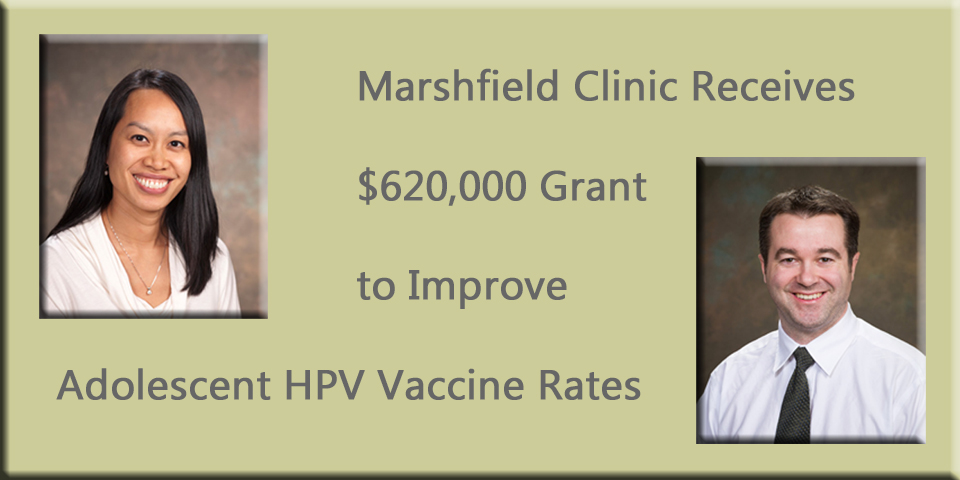Marshfield Clinic Research Foundation (MCRF) has received a $620,000 grant to promote vaccination against a common infection that can cause cancer.
The two-year project, funded by the Centers for Disease Control and Prevention (CDC), will supplement existing activities at Marshfield Clinic aimed at increasing adolescent human papillomavirus (HPV) vaccination rates.
“Increasing HPV vaccine uptake is a public health priority. The more adolescents who are vaccinated now, the more people we can protect against HPV-related cancers like cervical cancer in the future,” said Huong McLean, Ph.D., one of the study’s lead investigators at MCRF.
HPV is actually a group of more than 100 kinds of viruses. Most HPV infections are harmless, but some can lead to cancer or genital warts. An estimated 79 million Americans are infected with HPV, with 14 million new infections each year.
Like several other infections such as meningitis or pertussis, HPV can be prevented with a safe and effective vaccine.
“Prior research suggests there is often hesitation with the HPV vaccine. Some parents aren’t sure how safe it is or if is worthwhile for their child, so they hold off on it, “ said Jeffrey VanWormer, Ph.D., one of two epidemiologists leading the study at MCRF’s Center for Clinical Epidemiology and Population Health. “But no studies on this topic have been conducted in our area of Wisconsin yet, so we know very little about what influences the decision to get the HPV vaccine here.”
Three doses of HPV vaccine are recommended for 11- and 12-year-old girls and boys. The vaccine is most effective when received before a person is exposed to an infection, and immune response to the vaccine is better in younger adolescents.
Currently in the U.S., less than 40 percent of adolescent girls and 14 percent of adolescent boys get all three required doses of the HPV vaccine.
“The HPV vaccine is safe and effective, but very few adolescents have received the vaccination to prevent these serious diseases that HPV causes,” McLean said. “What we learn from this project may inform how other health care systems can reduce the burden of HPV infection in the patient populations they serve, which could eventually help decrease the rates of some cancers.”
Visit the CDC’s fact sheet to learn more about HPV, including symptoms and prevention measures such as the HPV vaccine.



